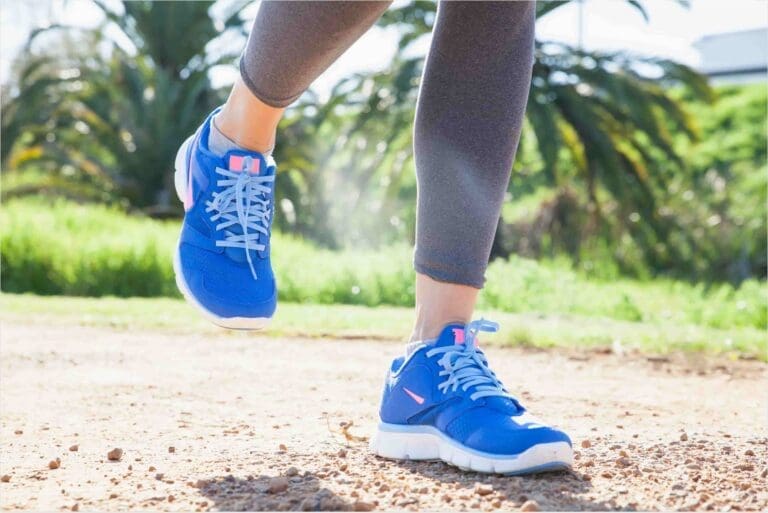Recently, I shared a coffee protein smoothie recipe with you and investigated what is in coffee? Is coffee bad for you? Is coffee a cup of chemicals?
Coffee is a known household favorite, 6 out of 10 Americans drink coffee daily. It has often received a bad reputation in the past, but there are several studies highlighting how coffee may be more beneficial to your health. Studies have shown that coffee may protect you from type 2 diabetes, heart attack, stroke, liver and Parkinson’s disease.
We love sharing the flavors with friends, toting our coffee in hand while heading out on a quarantine walk in our yoga pants, adding our favorite toppings and foam. Most people would say, their coffee order is part of who they are. Even though coffee has many health benefits, some of our most beloved coffee brands can contain pesticides, herbicides, and mold toxins (mycotoxins) which can all have harmful effects on your health.
Expert Insight: Coffee Toxins & Wellness
As a certified health professional with 17+ years of experience, I understand how coffee quality impacts overall wellness. While coffee offers numerous health benefits, being aware of potential toxins helps you maximize these benefits while protecting your health. Just as we focus on proper nutrition and exercise, choosing high-quality coffee plays a vital role in our daily wellness routine. I hope this research-backed guide helps you make informed choices about your daily coffee consumption and supports your journey toward optimal health.
As Featured In: CNN, Dr. Oz, Shape Magazine, The New York Times

What You’ll Learn
8 min readDoes my coffee have mold on it? What is a mycotoxin?
According to the World Health Organization, mycotoxins are toxic compounds that are naturally produced by certain types of molds that can occur either before or after harvest, during storage, on the food itself often under warm, damp, and humid conditions. Most mycotoxins are chemically stable and survive food processing. The study – led by Dr. Emilia Ferrer of the University of Valencia in Spain – is published in the journal Food Control.
She and her colleagues explain that mycotoxins are compounds produced by filamentous fungi – such as Aspergillus or Fusarium – that cause disease and health issues. These compounds can be carcinogenic and may affect the hormonal and immune systems.
Mycotoxicoses is the toxic effect of mycotoxins on animal and human health. Exposure to these compounds is typically by ingestion, but it can also occur through the skin or by inhalation.
According to the World Health Organization (WHO), general interest in mycotoxins came about in 1960, when turkey X disease – a form of mycotoxicosis that was related to animal feed – arose in farm animals in England. From this, it came to light that these toxins are hepatocarcinogens – agents that cause cancer of the liver – and thus began more widespread research into mycotoxins. The presence of these toxins on grains, nuts and other products that are susceptible to mold is determined by environmental factors, including temperature, humidity, and amount of rainfall during harvesting cycles.
How is coffee regulated? Are governments aware that those chemicals may still be utilized in coffee production?
No listed MRLs (maximum residue limits) for coffee means there is no set limit for pesticide residue and therefore no monitoring of pesticide residue levels. The highly-hazardous chemicals in coffee, Abamectin, Cypermethrin, Dichlorvos, Disulfoton, Endosulfan, Haloxyfop, parathion-methyl, Permethrin, and Propiconazole do not have coffee MRLs despite the fact that they have been documented in coffee production.
Why are coffee beans sprayed with chemicals?
Coffee is the number one pesticide sprayed crop in the world. Because coffee beans are so expensive compared to other crops, farmers will do everything it takes to protect their crops from various pests using pesticides the use of fertilizers to help them grow. Mass production of coffee requires land, so farmers must clear out rainforests and trees to utilize the land needed for production. When the trees are stripped from the lush rainforest land, there’s direct sunlight on the coffee bean, causing the immune system of the plant to weaken, creating a vulnerable environment where the crop is more susceptible to pests and insects. rowing coffee requires shade. Exposure to pesticides and herbicides sprayed on coffee has harmful effects on your health.
Many of these pesticides and insecticides sprayed directly on the crops end up in the coffee that people drink on a daily basis and therefore harm our bodies. These chemicals also cause damage to the soil and pollute the local water supply. Furthermore, workers who have tremendous exposure to these chemicals suffer greatly. Flower growers in Ecuador are a prime example of this.
When the beans are harvested, they are washed with water. This water, which now contains many different toxic chemicals, is released back into streams, rivers or whatever source it came from, possibly the soil.
Risk of cancer
The chemicals that are sprayed on coffee are not only acutely toxic; some of them may also cause cancer. One of the most common herbicides used on Brazilian coffee plantations is glyphosate, which is sold under the brand name Roundup and used around the world as a weed killer.
In the three regions of Minas Gerais state where most of its coffee plantations are located, 1,800 tons plus 18,000,000 liters of glyphosate were sold in 2014. In March 2015, the World Health Organization (WHO) changed its classification of glyphosate to “probably carcinogenic to humans”, in part because the chemical has been shown to cause cancer in research animals.
Glyphosate’s dangers include damage to DNA, according to Fabio Gomes, an expert working at the Brazilian National Cancer Institute (INCA).
“Even in small doses, glyphosate can cause cancer twenty to thirty years later”, says Gomes.
The question of whether glyphosate causes cancer is still debated, and in November 2015, the European Food Safety Administration determined that the chemical is unlikely to damage DNA or to cause cancer in humans.
Let’s break down what’s in your coffee:
-
- Ochratoxin A is a mycotoxin that has shown it could possibly cause kidney failure and cancer, brain damage and have negative effects on the immune system. This study found 33% out of 60 coffees sampled had Ochratoxin A.n
-
- Aflatoxin B1 is a mycotoxin and a known carcinogen that has been shown to have various harmful effects on the brain and kidneys. n
-
- Acrylamide is a potentially harmful chemical formed when coffee beans are roasted. It is found in all coffees and there isn’t a way to avoid it. The highest amounts of Acrylamide are found mostly in instant coffee and lighter roasted coffee but the amounts in each greatly vary. n
-
- Pesticides, Insecticides, Herbicides – This list is ever-changing so it’s hard to keep track — it’s estimated that around 40 different pesticides and chemicals are used on coffee crops around the world. Although many chemicals are banned in the US and EU, there are many other countries that have little to no regulations which means things can slip through the cracks. Additionally, the US government does not have maximum residue limits (MRLs) for pesticides used on coffee beans so there is really no way to know exactly how much pesticide residue is lurking on your coffee beans.
Is Decaf Coffee Safer For You?
I’m going to break your hearts here, I just know it. Rumors you’ve heard are true…your pesticide exposure is higher with decaf coffee.Aflatoxin and ochratoxin have been found in higher amounts in decaf and can cause cell mutation and organ toxicity in humans. This occurs because caffeine actually prevents the growth of molds that produce mycotoxins, decaf contains minimal caffeine, so it lacks the same protective mechanism.Dave Asprey of Bulletproof, explains:
Caffeine is a natural anti-insect and antifungal defense mechanism for the plant. It deters mold and other organisms from growing on the beans. Mold is everywhere, but caffeine helps prevent it from growing on the beans while they’re in storage. When you remove the caffeine, your beans are defenseless. Decaf coffee is higher in both aflatoxin and ochratoxin. This is one of the reasons decaf tastes like camel sweat.”
Chemicals used in the decaffeination process are the main issue. There are reports of people, who while drinking decaf coffee, experienced severe reactions. Originally it was believe there must have been traces of caffeine in the coffee causing the reactions, but it was discovered the cause was from chemicals used in the process of decaffeination and passed along into the coffee. If you choose to drink decaffeinated coffee, water-processed decaf is a better option.

How to reduce harmful toxins and chemicals in your coffee:
-
- To reduce Acrylamide in coffee, choose dark roasted coffee and avoid instant coffee and coffee alternatives. Like I mentioned before, there is no way to completely remove it so your best bet is to reduce consumption amounts.n
-
- Purchase certified organic coffee that is free of pesticides, herbicides, fungicides, chemical fertilizers, and other potentially harmful chemicals.
-
- To avoid mycotoxins, seek out brands of coffee like Natural Force coffee or Bulletproof coffee that are stored in temperature-controlled areas to avoid humid, moist storage environments that can lead to mold. n
-
- Reduce your coffee intake. That doesn’t mean you have to stop drinking coffee altogether, but you might try reducing your consumption starting with the weekends. This is an easy way to start lowering exposure to harmful molds and chemicals.
When possible, purchase pods that aren’t made from plastic, as plastic coffee pods are made from polystyrene or polypropylene, can have ethylene-vinyl additives and can be reinforced with talc to help keep their shape under the pressure of boiling hot water. Some plastic pods have been found to contain bisphenol F (BPF) and bisphenol S (BPS) — two chemicals known to be endocrine disruptors linked to hormone imbalances, weight gain, and fertility issues. Even traditional pods marked “BPA-free” tested positive for estrogenic activity according to a 2011 study by Environmental Health Perspectives. Here is a study on BPF and BPS, showing the validity of hormone disruption.
In future blog posts, we will get into weight gain due to hormone disturbance. In the meantime, drink only organic coffee, and fairtrade if possible!
In health,
Holly
Key Takeaways
Coffee is the most pesticide-sprayed crop globally, making organic coffee a safer choice for reducing exposure to harmful chemicals.
Decaf coffee typically contains higher levels of mycotoxins since caffeine naturally prevents mold growth – opt for water-processed decaf when possible.
Choose dark roasted coffee and avoid instant coffee to reduce Acrylamide exposure while maximizing health benefits.
Look for brands that use temperature-controlled storage to prevent mold growth and minimize exposure to harmful mycotoxins.
Enhance Your Wellness Journey
Making informed choices about health and wellness can feel overwhelming. Whether you have questions about nutrition, fitness, or general wellbeing, our team is here to help you navigate your personal health journey.
Transform Your Health with Expert Guidance
Ready to take your wellness journey to the next level? Our evidence-based programs combine personalized training with comprehensive wellness guidance, available in-studio, at-home, or virtually to fit your lifestyle.
*Contact us to check availability in your area
If this article has piqued your interest in what is lurking inside of your pantry, then I encourage you to read my blog post Why You Should Stop Buying Almond Milk!








